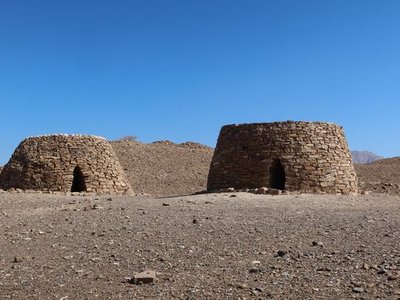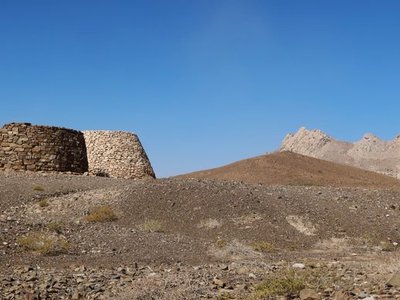Beehive Tombs of Bat


More than 100 tombs stand
defiantly on the hilltops of northern
Oman
, all shaped like beehives. Little is known about the tombs, or the culture that constructed them, but they are thought to date from 3000 to 2000 B.C. All together, they form one of the largest protohistoric necropolises in the world.
It is a bit difficult to spot the tombs at first since they merge harmoniously with the hills they were built on, but they are easily spotted upon closer inspection. The tombs are arranged in three main clusters, the one in Bat, which is arguably the most famous, as well as the sites of al-Ayn and al-Khutm. The best-preserved tombs at the site are the ones of the al-Ayn grouping.
The earlier tombs of the site are simple structures, with only one entrance and one funerary chamber, and the later tombs have two entrances and up to four tomb chambers. Each of the tombs was built as a collective burial place for this mysterious Bronze Age culture.
Besides the tombs, only a few artifacts give any clues about the culture, and are limited to a few arrowheads, daggers, and water jugs. In 1988, the tombs were inscribed as a World Heritage Site.